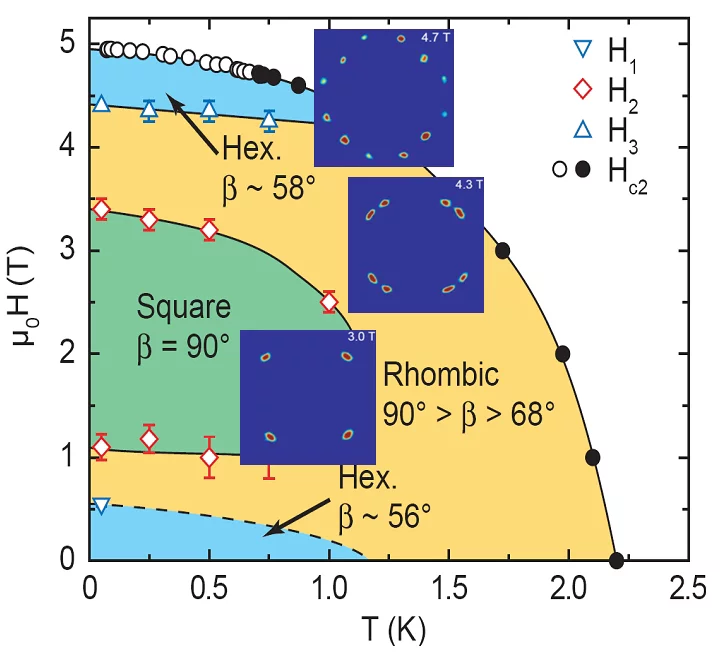Publication in Science
Superconductors take advantage of electron pairing to transport electrical current without resistance. They are therefore of central significance in energy research. An international team of scientists has published the latest research results in this field in today's edition of Science
magazine.
The experiments were carried out at the Swiss spallation neutron source (SINQ) at the Paul Scherrer Institute (PSI). This facility produces a continuous stream of neutrons, which can be used to look inside materials without destroying them. The research team has discovered that a magnetic field can interact with the electrons inside a superconductor in ways never observed before. The team consists of researchers from various universities: the University of Montreal, ETH Zurich, PSI, the University of Notre Dame, the University of Birmingham, the Los Alamos National Laboratory and the Brookhaven National Laboratory.
Connection between magnetism and superconductivity
According to Michel Kenzelmann, scientist at PSI and professor at ETH Zurich, these results demonstrate a fundamental connection between magnetism and superconductivity: Our observations offer a fresh perspective into the exotic properties of magnetically-induced superconductivity
.
In their experiments, the researchers cooled a single crystal made of the elements cerium, cobalt and indium (CeCoIn5) down to very low temperatures – to minus 273.1 degrees. All atomic movements cease at this temperature. Under these conditions, the electrons in this material combine into pairs. This creates the superconducting, resistance-free condition that allows electric current to be transported without any losses. Magnetic fields can be used to destroy the electron pairs and to suppress superconductivity, so superconductors attempt to exclude magnetic fields as well as possible. If that is not possible, electrical ring currents may form, leading to electromagnetic twisters known as a vortices. Vortices arrange themselves into a regular pattern, or vortex lattice, and allow that magnetic fields partly penetrate the interior of the superconductor.
Glue
for electrons
Vortices were also observed during the experiments on CeCoIn5 at the PSI. Surprisingly, however, the researchers found that the vortex structure in CeCoIn5 does not only consist of electrical ring currents. Inside the vortex, there are additionally magnetic dipole moments that grew bigger with magnetic field strength. According to the researchers, it is probable that the newly-discovered vortex structure is directly linked to the strong movements of the magnetic dipole moments in this material. Strongly fluctuating magnetic dipole moments are likely to act as glue
for the electrons, and thus give rise to the superconducting condensate in CeCoIn5.
The understanding of the coupling mechanism for electrons in exotic superconductors will clarify to what extent superconductors can be used for technological applications at high temperatures. Our results are a step in this direction
, explained Kenzelmann.
Further information available from:
Prof. Dr. Michel Kenzelmann, Neutron Scattering Laboratory, PSI,Tel. +41 56 310 53 81, michel.kenzelmann@psi.ch

